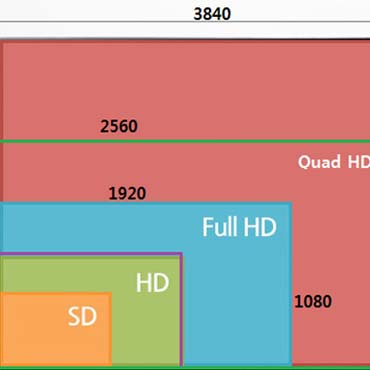IPS and AMOLED are both commonly used display technologies for smartphones and monitors. Although IPS and AMOLED are both customized products for consumers, consumers don’t actually know much about them and always find it difficult to shop for them. Therefore, we will talk about the differences between IPS and AMOLED from several angles.
About IPS technology
As the most widely used display technology in LCD, IPS technology has eaten up nearly 90% of the display market together with VA panels before the arrival of OLED and AMOLED technology. In addition, IPS LCD also has a considerable market in smartphones, like the familiar iPhone 4 to iPhone 11 series use IPS screen.
About AMOLED Technology
AMOLED is a display technology developed on the basis of OLED, which is currently mainly used in smartphones. Its main advantage is in the form of self-illumination, which can better save energy consumption, and due to the limited technology, there is still much room for improvement.
Similarities between AMOLED and IPS
First, they both provide consumers with a rich picture, and both excel at a variety of tasks when applied to everyday tasks. Second, they are both very easy to install and can be set up quickly in just a few simple steps.

Finally, both have a thin and light volume, placed on the desktop, usually does not take up too much space, and both from the appearance is not easy to notice the difference. Therefore, whether it is IPS display, or AMOLED display in the ease of use, simplicity and other aspects have unparalleled advantages.
Advantages and Disadvantages of AMOLED and IPS
Since the two are different types of technology, their advantages and disadvantages are quite different, so let’s take a look at them separately:
Advantages of IPS
IPS has been around for 28 years now, since its introduction in 1996. During this long period of time, it has had a well-established supply chain system, capable of various customizations according to the needs of different customers. And, in the marketplace, IPS has adapted to a variety of different sectors with its wide range of sizes and aspect ratios, and as a result, has accumulated a large user base.

Disadvantages of IPS
Since IPS requires the use of a backlight, its energy consumption is usually much higher than that of LED and AMOLED. Also, the picture quality is not as good at high brightness and high contrast ratio.
Advantages of AMOLED
Like OLEDs, AMOLEDs do not require a backlight to emit light, so they have features that LCDs do not, such as greater energy efficiency, better viewing angles, and faster response times. These features bring more possibilities and surprises for professional design needs or high-end gamers.

Disadvantages of AMOLED
Due to the immaturity of the technology, AMOLED is still facing many problems, such as high manufacturing costs, shorter service life, and screen burn-in issues. However, the manufacturing cost and screen burning have been improved, and it is believed that AMOLED will be more widely used in the near future.
Differences between AMOLED and IPS
IPS and AMOLED have their own advantages and disadvantages, so in some detailed comparison, what are the differences between the two? Let’s take a look.
Size
In addition to the application of cell phones, in many of the e-commerce platform we can also see a variety of different sizes of IPS display, common 28 inches, 32 inches, there are a number of TV made using IPS technology, their size can usually reach 85 inches, or even 110 inches. AMOLED is currently mainly used in cell phones, only Samsung has a very small number of monitors using AMOLED, the current query Alibaba international station, Amazon and other e-commerce platforms, did not find on the shelves for sale.
Weight
Under the same area, AMOLED is usually lighter than IPS. On the one hand, AMOLED does not need a backlight panel to further compress the space, and on the other hand, because AMOLED is an organic material, the material itself is much lighter than IPS.
Structure
IPS is composed of backlight, glass plate, liquid crystal, polarizing filter, color filter, these 5 parts; conventional AMOLED is composed of glass plate, TSP glass plate and AMOLED material, 3 parts; Samsung’s super AMOLED, only glass plate and AMOLED material, these two parts. Whether theoretically, or practically, AMOLED can be made thinner and lighter than IPS.
Viewing Angle
Although IPS displays have almost perfect viewing angles (≤180°), there is still a small gap with the perfect angles of AMOLED displays.
High Contrast Ratio
AMOLED displays are able to display black color without emitting any light at all, so they are able to display a more perfect contrast ratio. IPS LCDs are not able to achieve this effect at the moment.
Pixel Control
AMOLED displays can achieve precise control of each pixel, while LCDs can only achieve partial area control. This plays an extremely important role for industries that require high levels of refinement.
For a more detailed comparison, we can view the table below
| Name | AMOLED | IPS |
| Full Name | Active-matrix organic light-emitting diode | In-Plane-Switching Liquid Crystal |
| Quality | lighter | heavier |
| Energy Consumption | lower | higher |
| Visual Angle | ≤180° | 180° |
| Birth Time | 2006 year | 1996 year |
| Response Speed | faster | quicker |
| Backlight | No | yes |
IPS vs. AMOLED: Which is better?
When faced with an IPS display or an AMOLED display in practice, how do we make a choice? Which one is better? In fact, the final decision is in your hands. Because for people with a tight budget, choosing IPS is still the best choice. For consumers who are more specialized and want perfect picture quality, choosing an AMOLED monitor is obviously a better choice.
If you do have a hard time choosing, you may want to buy both at the same time like I did. As far as my personal experience is concerned, I think AMOLED is superior to IPS, so I usually use my smartphone with AMOLED display more.




